In recent years NAV CANADA has been leading a charge to move the industry away from magnetic north to true north. And it makes sense.
Modern technology has arguably rendered magnetic north obsolete. So why are we still using it? The simple answer is because we always have. Delve into ICAO Annex 4 and you’ll see that bearings, tracks and radials must still be published in degrees magnetic. But this begs the question – do we actually need it anymore?
When humans first took to the skies, things were different. They needed a directional reference. Back in those days it had to be something simple and light – enter the magnetic compass. Nature was guiding the way because it had too.
With modern navigation systems these days all the magic happens reference to true north. Inertial and GPS systems both use simple conversions so that the information can be displayed to crew as a magnetic reference to match our charts and procedures.
But because we are still using magnetic north as a reference we are forced to deal with magnetic variation – the angular difference between the true and magnetic poles. It is an issue that costs the industry many millions of dollars a year to manage and can potentially lead to serious safety issues if things aren’t handled properly on the ground and in the sky.
Let’s get science-y.
The earth has its own magnetic field. That’s because its outer core contains molten iron. Writhing lobes of magnetic flux surround the earth and meet near the top and bottom of the globe – the spots we know as the magnetic north and south pole.

The earth’s ever changing magnetic field.
Open up a compass and the steel needle will align itself to the magnetic field lines around it and hey presto, it will point directly at the magnetic north pole.
But here’s the problem – molten iron is a liquid, and it moves around. Which means the magnetic north pole does too. It never sits still. In fact in recent times it has put its foot down and is now moving close to 40 miles each year. As of last year, it was about 250nm away from the true pole and headed for Siberia.
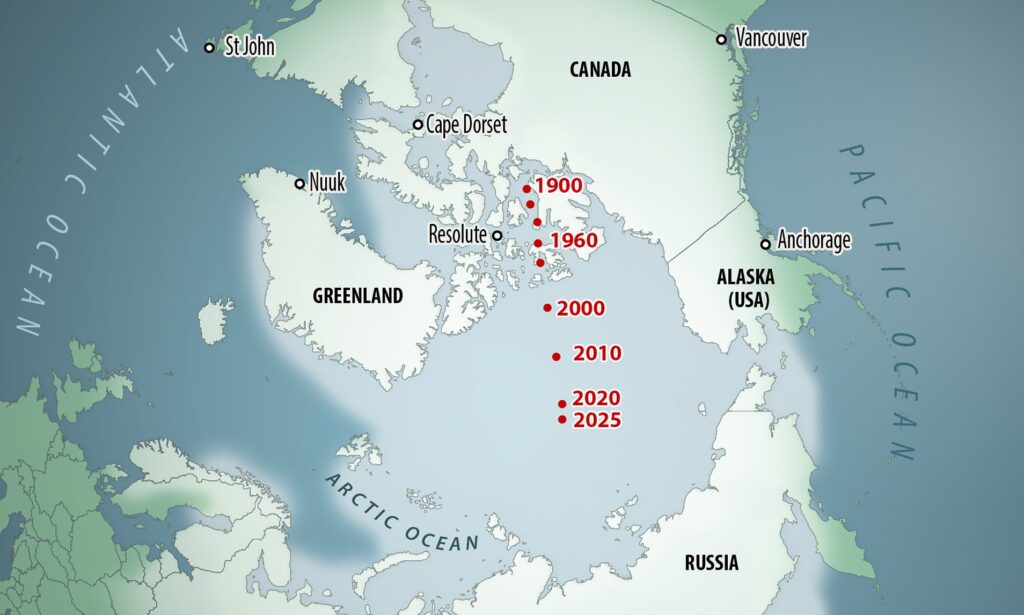
The constantly moving magnetic north pole over time.
The magnetic north pole is of no use to modern navigation systems because it is constantly on the move. Instead, they operate using a ‘geodetic reference system’ – a really fancy name for co-ordinates that may impress people at your next cocktail party.
Two variables, the ol’ lat and long, come together and allow us to define any spot on the surface of the earth. All meridians of longitude are anchored to the true north pole because it never changes. It is simply the northern end of the axis around which the world and that globe on your desk spins. Latitude on the other hand is reference to the equator which never moves either.
In fact, the only way either could change is if the earth’s angle of tilt moved too in which case we’d have bigger things to worry about. So, when we combine the two we can divide the surface of the world into a grid and pinpoint exactly where we are – a process that both inertial and GPS systems use to stop us getting lost out there.
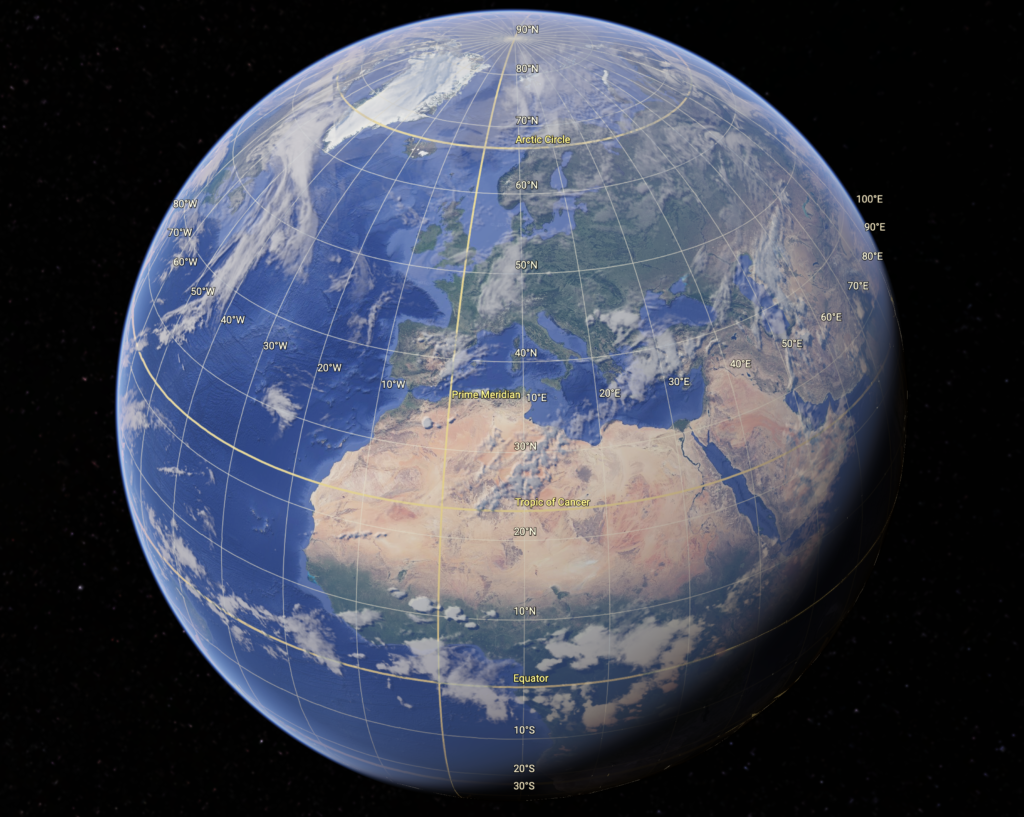
Lat and Long – anchored by the equator and earth’s axis of rotation.
Here are the issues.
All of our procedures, bearings, tracks, VOR radials, even our runway designators are still presented in degrees magnetic because the regs say they have to be.
And because of that every time the magnetic north pole moves, magnetic variation changes and the industry has to get out there and re-jig everything. Literally every computer that references magnetic north in some way has to be updated.
Magnetic variation is constantly changing. Credit: NOAA
All our IFR procedures from enroute, to terminal and approach phases have to be changed and re-published. Our FMS’s have to be programmed to match too. VORs have to be rotated and navaids flight tested. Radars have to be realigned and airport signs replaced. Even runways have to be repainted. It literally costs ANSPs, airports, avionics manufacturers and operators millions.
Take KTPA/Tampa for example. In 2012 changes to variation forced the airport to renumber its primary runway, no less than 140 signs had to be replaced.
It is also a safety issue. The whole system depends on everyone updating everything at the same time which seldom happens. A small change can have a big impact too. The PBN systems we rely on to keep us safe can be compromised by changes to variation if not updated. Synthetic vision systems can begin to tell pilots lies.
Anchorage in 2012 serves as a cautionary tale. The FAA updated its magnetic variation of the airport. Because operators didn’t update their aircraft’s avionics quickly enough, in some cases there was a mismatch. Flight tests revealed that using the old value, Cat II and III approaches were no longer within lateral guidance limits – not what you want to hear when you’re in the soup. The FAA temporarily changed procedures back to old value to allow time for operators to catch up.
We know that it works too – Canada has been using conventional and PBN procedures using True North for some time throughout a huge chunk of its northern domestic airspace successfully, where magnetic references become unusable.
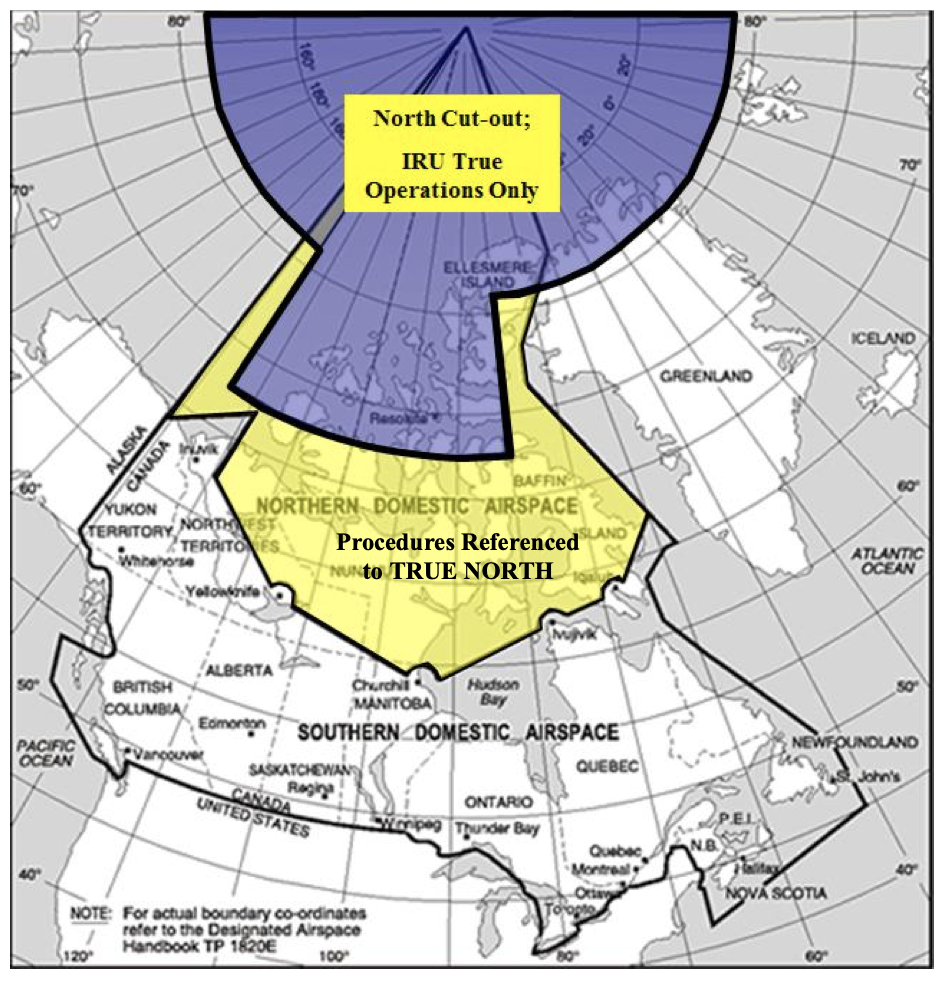
True north operations in Canadian domestic airspace.
So why can’t we just turn it off?
That’s the beauty of it – we can. Technically, it’s as simple as flicking a switch. Converting things from true to magnetic is just a process that we can just turn off. A lot of aircraft even have that very switch already.
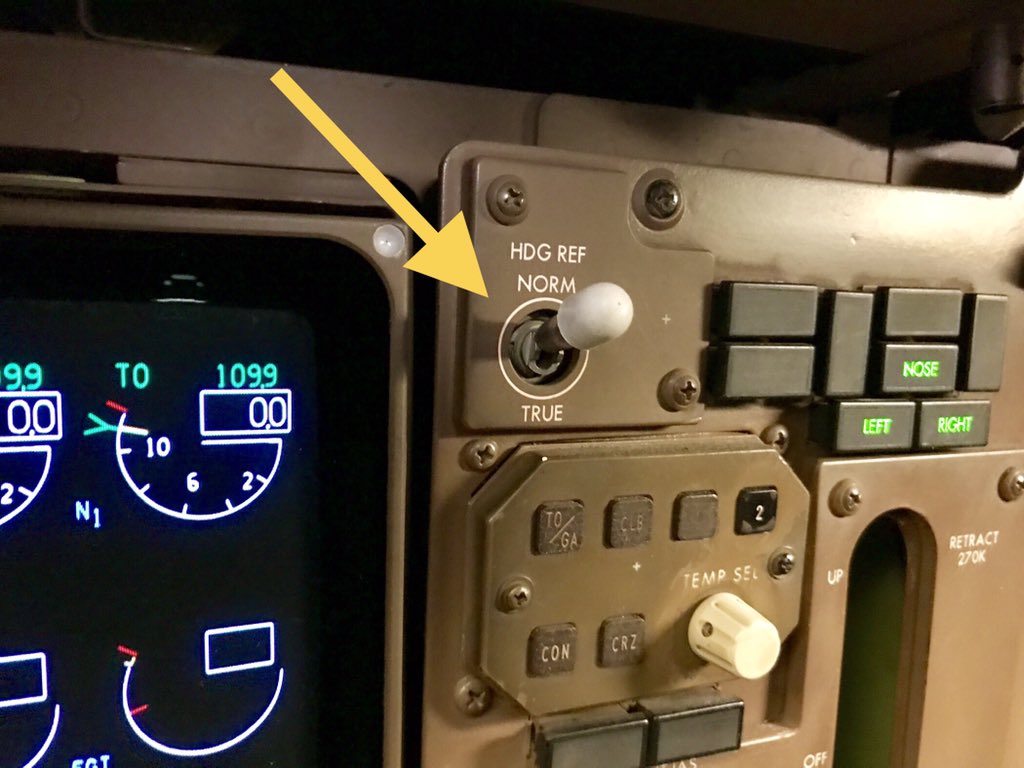
As easy as flicking a switch?
Photo credit: Ken Hoke @AeroSavvy
Practically speaking though, the problem is the huge legal, administrative and legislative implications that would follow. Rome wasn’t built in a day and neither would a huge change to aviation procedures around the world. It would literally take years to implement.
But that may be no excuse for change, otherwise we will continue to expose ourselves to known risks. Take Notams for example. We are still communicating critical safety information using a format that has existed since 1924 – an invention for teleprinters.
The industry is beginning to see that the status quo isn’t necessarily the safest way forward. OPSGROUP have recently begun to work with ICAO and other partners on a global campaign to improve Notams, and it has only just begun.
No longer using magnetic north is no different – it is only a hurdle to something better, more consistent and safer for everyone.
More on the topic:
- More: More face scans at the US border: BizAv now included
- More: Mexico Customs Surprises: Pills, Vapes, and Laptop Rules
- More: Greenland NAT Alternates: Dec 2025 Update
- More: Crossing the Quiet South: From Australia to Argentina
- More: Major runway shutdowns ahead at KVNY/Van Nuys
More reading:
- Latest: More face scans at the US border: BizAv now included
- Latest: Mexico Customs Surprises: Pills, Vapes, and Laptop Rules
- Latest: Greenland NAT Alternates: Dec 2025 Update
- Safe Airspace: Risk Database
- Weekly Ops Bulletin: Subscribe
- Membership plans: Why join OPSGROUP?



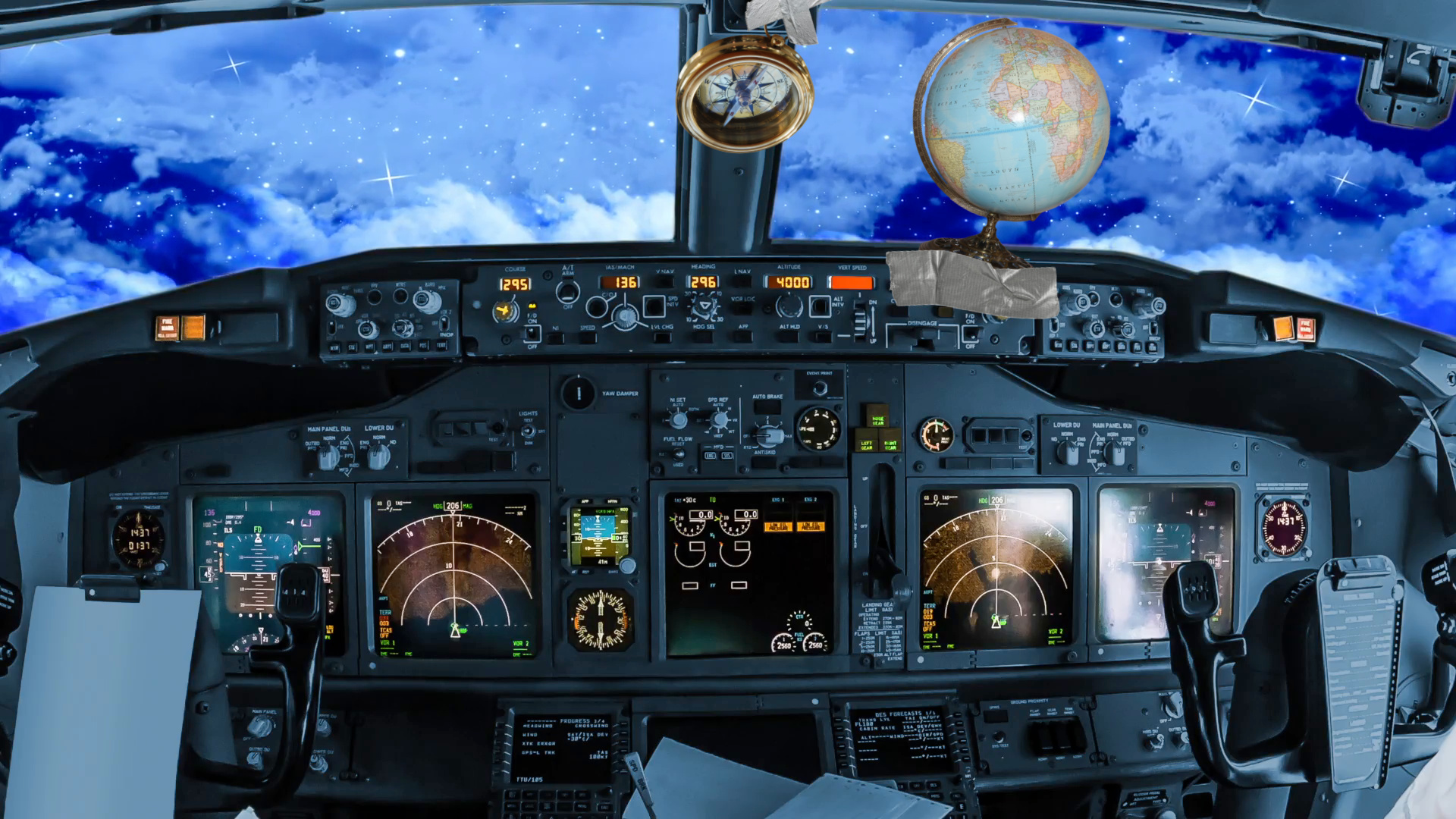







 Get the famous weekly
Get the famous weekly 






You skipped the most important point: the poles are shifting. Humans have no idea what happens next! The “tilt” you breeze by is about to occur.
Hi Gilles, thanks for reaching out. I agree – a conversion to true north would certainly create unique challenges for the industry, especially catering for differences in equipment on board and also allowing for adequate redundancies. It all makes for a good discussion and we value your input. Thanks!
GNSS does not provide a bearing until one moves. It is the IRS of the modern jet that runs the compass cards, not the GPS.
Modern jet MELs dont of IRS equipped aircraft dont allow flying without IRS……
Aircraft that don’t have IRS have a flux valve that provides heading indication to the DG (HSI, ADI, ND or whatever instrument the aircraft has). That heading is Magnetic,
Another reason is that GPS belongs to the US military which gives no guarantee that it will continue providing reliable and free GPS service to civil aviation worldwide for the foreseeable future.
Which is why we need GLONASS and Galileo, the Russian and European GPS equivalents.. When these alternate GNSS systems will be fully operational and all aircraft receivers will be able to receive and navigate on all three, maybe civil aviation will be able to switch to True north for IFR flights.
Hi Joe, a very valid point, thanks. It would certainly have implications for GA which shouldn’t be over looked either. Thanks for reaching out!
I agree in concept, but what about all of the small aircraft out there that may only have a wet compass with an old-school DG?
Sure. Makes sense. However, is anyone else concerned about the elephant in the room? According to the plot points, the north pole is moving at an accelerating rate. Why would scientists believe the 2025 location will be located as it is in the picture? It’s not remotely consistent with the pattern.
We really need our magnetic field to be stable. As the poles approach each other we’ll lose shortwave capability, protection from cosmic rays, potentially our ozone layer, and so much more.